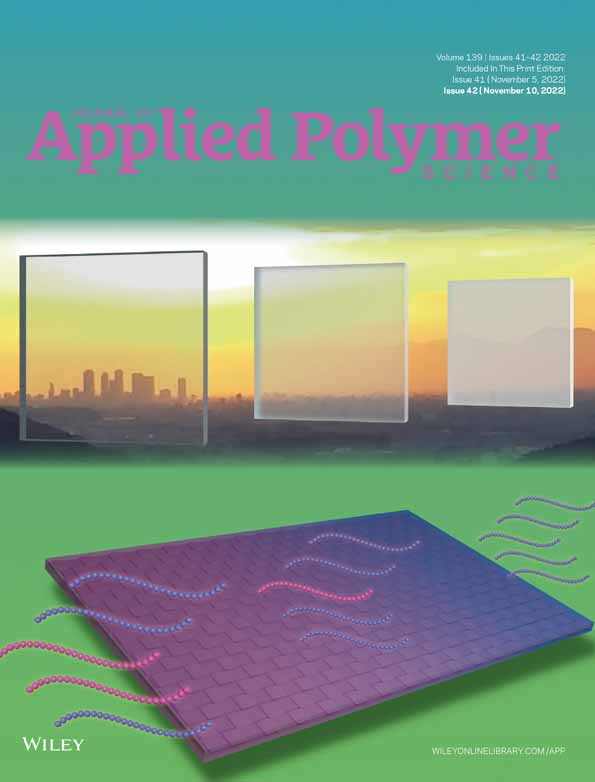Preparation and properties of modified graphene oxide / polyacrylamide composite nanoparticle gel system
Yang Chen and Xin Li contributed to the work equally and should be regarded as co-first authors.
Funding information: Sinopec Key Scientific, and Technological Research Projects, Grant/Award Number: 2020GKF-0657; National Science and Technology Major Project of China, Grant/Award Number: 017ZX07402003
Abstract
Graphene oxide (GO) itself has a high viscous force on water and is very hydrophilic. To improve its hydrophobicity, adsorption performance, surface activity and stability, GO is needed to be modified for petroleum drive regulation applications. Therefore, GO was functionally modified with octadecylamine, and their structures were characterized by FT-IR, X-ray photoelectron spectroscopy (XPS), TGA, and SEM. Furthermore, the effective modification of long chain alkyl amine was verified. Then, the composite nanoparticle gel system was prepared by the interaction of modified graphene oxide (X-GO) with polyacrylamide (HPAM) via chemical or physical forces. The optimal preparation conditions were determined by the response surface method (RSM). Under the optimal preparation conditions, the blocking rate can reach 95.27%. Turbiscan Lab stability omnipotent stability analysis and viscoelasticity testing showed that the composite gel system had good stability and viscoelasticity. The particle size result showed that the composite system was a nano system. In addition, the X-GO/HPAM composite nanoparticle gel system also showed good temperature resistance, salt resistance, and shear resistance in performance tests. Finally, the result of the core-blocking rate and breakthrough pressure test showed that it had good blocking performance, with a blocking rate of more than 95%.
Open Research
DATA AVAILABILITY STATEMENT
The data that support the findings of this study are available on request from the corresponding author. The data are not publicly available due to privacy or ethical restrictions.




